In the competitive landscape of family cars, the Skoda Octavia Combi and Toyota Corolla have carved out their niches, offering a blend of practicality, efficiency, and advanced technology. This comparison aims to highlight the technical aspects and innovations of both models, helping potential buyers make an informed decision.
Skoda Octavia Combi vs Toyota Corolla – Which model is better for everyday use?
Two cars, one duel: Skoda Octavia Combi meets Toyota Corolla.
Which one wins in performance, efficiency and value for money? Find out now!
Design and Dimensions
The Skoda Octavia Combi boasts a wagon body type that emphasizes spaciousness and utility. With a length of approximately 4698 mm and a width of 1829 mm, it provides ample interior space for passengers and luggage alike. The trunk capacity stands out impressively at 640 liters, making it a top choice for families and those requiring additional cargo space.
On the other hand, the Toyota Corolla is designed as a hatchback, which contributes to a more compact exterior. Measuring 4370 mm in length and 1790 mm in width, the Corolla is slightly easier to maneuver in urban settings. However, its trunk capacity is lower, measuring 361 liters in the hatchback variant, making it less practical for carrying larger loads compared to its Skoda rival.
Engine Performance and Efficiency
When it comes to engine options, the Skoda Octavia Combi offers a diverse lineup, including petrol, petrol MHEV (Mild Hybrid Electric Vehicle), and diesel engines, with power outputs ranging from 116 HP to a stunning 265 HP for the sporty versions. The acceleration from 0 to 100 km/h varies across models, with the fastest achieving this in just 6.5 seconds. Additionally, fuel consumption is competitive, allowing for an efficient driving experience with figures as low as 4.4 L/100km for the diesel variants.
The Toyota Corolla, primarily powered by a full hybrid engine, delivers a different approach. With power outputs of 140 HP in its standard form and 196 HP in higher trims, the Corolla also excels in efficiency, achieving remarkable consumption figures of 4.4 L/100km. The hybrid technology allows for an effortless transition between electric and petrol power, making it an eco-friendly option that’s ideal for city driving.
Driving Dynamics and Comfort
Both vehicles come with front-wheel drive systems, ensuring excellent stability and control. The Skoda Octavia offers a variety of transmission options, including manual and dual-clutch automatic gearboxes, catering to different driving styles. Its ability to reach a top speed of up to 250 km/h across certain models provides an exhilarating driving experience for enthusiasts.
The Toyota Corolla, with its CVT automatic transmission, focuses on smooth and responsive acceleration. While it may not reach the same top speeds as the Octavia, it compensates by offering a more relaxed driving experience that aligns well with its hybrid nature. The Corolla can accelerate from 0 to 100 km/h in as little as 7.5 seconds in its more powerful version.
Innovations and Technology
Both Skoda and Toyota are at the forefront of automotive technology. The Octavia Combi features cutting-edge infotainment systems, with options for touch-screen displays and smartphone integration. Advanced driver assistance systems and safety features such as adaptive cruise control and lane departure warning enhance the overall driving experience.
The Toyota Corolla is equipped with the latest safety and connectivity features as well. Its Toyota Safety Sense suite includes adaptive cruise control, lane tracing assist, and a robust set of airbags, prioritizing occupant safety. Moreover, the infotainment system is user-friendly, with Apple CarPlay and Android Auto integration available across the range.
Conclusion
In summary, the choice between the Skoda Octavia Combi and Toyota Corolla largely depends on individual needs and preferences. For those seeking a spacious and high-powered family wagon, the Octavia Combi stands out with its extensive trunk space and engine variety. Conversely, if fuel efficiency and hybrid technology take precedence, the Toyota Corolla offers an appealing, eco-friendly alternative. Regardless of the choice, both cars embody quality engineering and innovation, demonstrating their manufacturers' commitment to providing exceptional vehicles for modern drivers.
Here’s where it gets real: The technical differences in detail
Costs and Efficiency:
Price and efficiency are key factors when choosing a car – and this is often where the real differences emerge.
Skoda Octavia Combi has a to a small extent advantage in terms of price – it starts at 24400 £, while the Toyota Corolla costs 28600 £. That’s a price difference of around 4157 £.
Both cars consume an average of 4.40 L per 100 km – no difference here.
Engine and Performance:
Under the bonnet, it becomes clear which model is tuned for sportiness and which one takes the lead when you hit the accelerator.
When it comes to engine power, the Skoda Octavia Combi has a distinct edge – offering 265 HP compared to 178 HP. That’s roughly 87 HP more horsepower.
In acceleration from 0 to 100 km/h, the Skoda Octavia Combi is somewhat quicker – completing the sprint in 6.50 s, while the Toyota Corolla takes 7.50 s. That’s about 1 s faster.
In terms of top speed, the Skoda Octavia Combi performs clearly perceptible better – reaching 250 km/h, while the Toyota Corolla tops out at 180 km/h. The difference is around 70 km/h.
Space and Everyday Use:
Beyond pure performance, interior space and usability matter most in daily life. This is where you see which car is more practical and versatile.
Both vehicles offer seating for 5 people.
In curb weight, Skoda Octavia Combi is barely noticeable lighter – 1366 kg compared to 1420 kg. The difference is around 54 kg.
In terms of boot space, the Skoda Octavia Combi offers decisively more room – 640 L compared to 361 L. That’s a difference of about 279 L.
In maximum load capacity, the Skoda Octavia Combi performs noticeable better – up to 1700 L, which is about 648 L more than the Toyota Corolla.
When it comes to payload, Skoda Octavia Combi a bit takes the win – 534 kg compared to 450 kg. That’s a difference of about 84 kg.
Who comes out on top?
Overall, the Skoda Octavia Combi shows itself to be wins the duel decisively and secures the title of DriveDuel Champion.
It convinces with the more balanced overall package and proves to be the more versatile choice for everyday use.
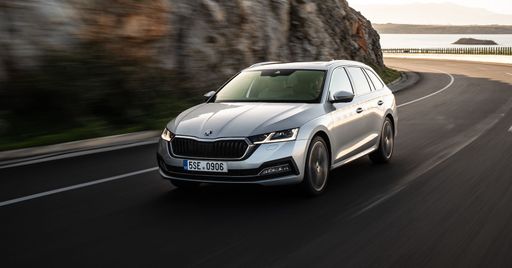 @ Škoda Auto a.s. / Škoda Storyboard
@ Škoda Auto a.s. / Škoda Storyboard
Skoda Octavia Combi
Skoda Octavia Combi
The Skoda Octavia Combi is the sensible family wagon that somehow turns grocery runs and long trips into a pleasant, unshowy experience — spacious, practical and built like it prefers reliability over flash. With smart touches, clever storage and a cabin that feels grown-up rather than frugal, it’s an easy recommendation for buyers who want maximum utility without sacrificing comfort or style.
details @ Škoda Auto a.s. / Škoda Storyboard
@ Škoda Auto a.s. / Škoda Storyboard
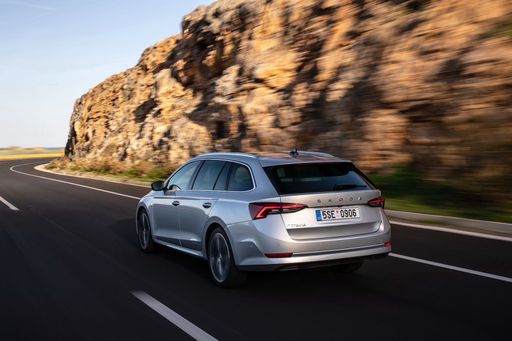 @ Škoda Auto a.s. / Škoda Storyboard
@ Škoda Auto a.s. / Škoda Storyboard
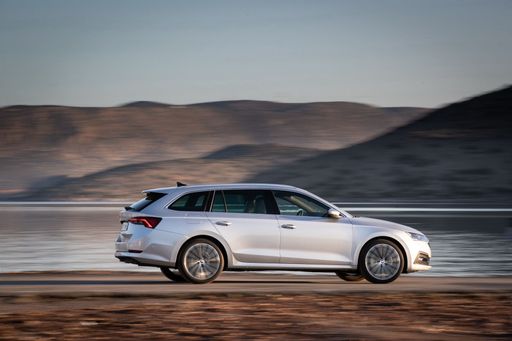 @ Škoda Auto a.s. / Škoda Storyboard
@ Škoda Auto a.s. / Škoda Storyboard
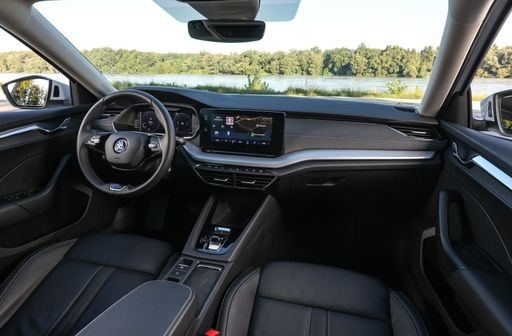 @ Škoda Auto a.s. / Škoda Storyboard
@ Škoda Auto a.s. / Škoda Storyboard
Toyota Corolla
The Toyota Corolla remains the steady, no-nonsense compact that puts reliability and low running costs at the top of your shopping list, with a comfortable, well-built interior that won't embarrass you at the supermarket. It won't set your pulse racing, but it's an honest, easy-to-live-with car that makes smart sense for buyers who want dependability and sensible value with a dash of modern tech.
details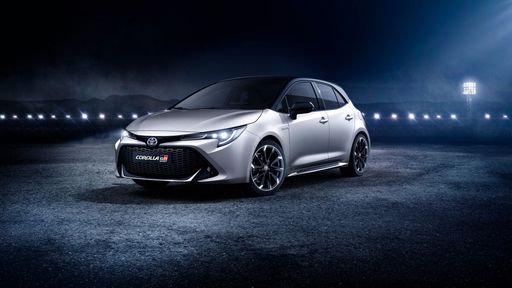 @ Toyota Motor Corporation
@ Toyota Motor Corporation
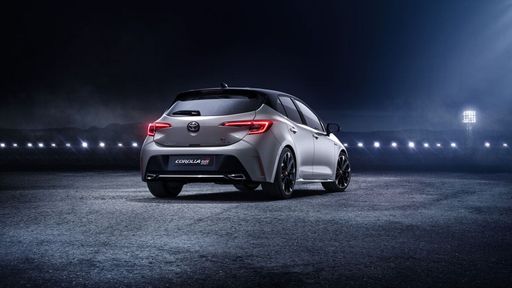 @ Toyota Motor Corporation
@ Toyota Motor Corporation
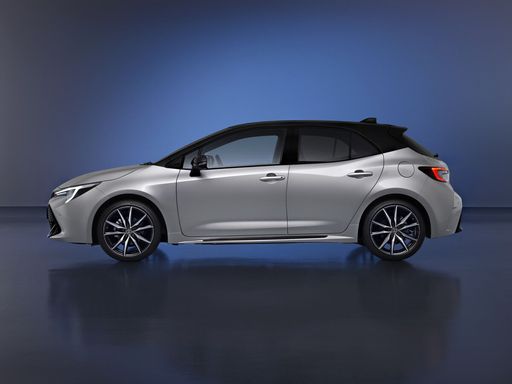 @ Toyota Motor Corporation
@ Toyota Motor Corporation
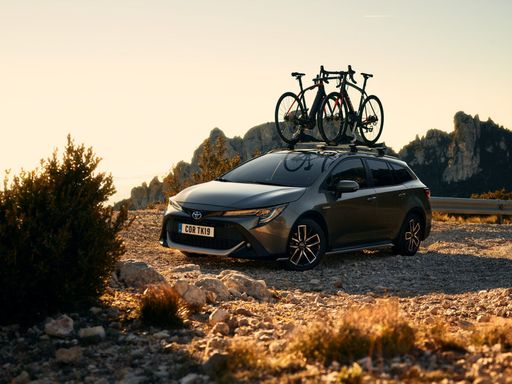 @ Toyota Motor Corporation
@ Toyota Motor Corporation
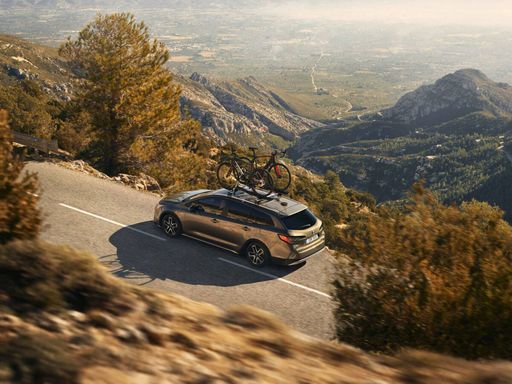 @ Toyota Motor Corporation
@ Toyota Motor Corporation
 @ Škoda Auto a.s. / Škoda Storyboard
@ Škoda Auto a.s. / Škoda Storyboard
|
 @ Toyota Motor Corporation
@ Toyota Motor Corporation
|
|
|
|
Costs and Consumption |
|
|---|---|
|
Price
24400 - 42300 £
|
Price
28600 - 34900 £
|
|
Consumption L/100km
4.4 - 6.9 L
|
Consumption L/100km
4.40 L
|
|
Consumption kWh/100km
-
|
Consumption kWh/100km
-
|
|
Electric Range
-
|
Electric Range
-
|
|
Battery Capacity
-
|
Battery Capacity
-
|
|
co2
113 - 157 g/km
|
co2
100 g/km
|
|
Fuel tank capacity
45 - 55 L
|
Fuel tank capacity
43 L
|
Dimensions and Body |
|
|---|---|
|
Body Type
Estate
|
Body Type
Hatchback
|
|
Seats
5
|
Seats
5
|
|
Doors
5
|
Doors
5
|
|
Curb weight
1366 - 1553 kg
|
Curb weight
1420 - 1460 kg
|
|
Trunk capacity
640 L
|
Trunk capacity
313 - 361 L
|
|
Length
4698 - 4709 mm
|
Length
4370 mm
|
|
Width
1829 mm
|
Width
1790 mm
|
|
Height
1455 - 1468 mm
|
Height
1435 mm
|
|
Max trunk capacity
1700 L
|
Max trunk capacity
1004 - 1052 L
|
|
Payload
471 - 534 kg
|
Payload
400 - 450 kg
|
Engine and Performance |
|
|---|---|
|
Engine Type
Petrol, Petrol MHEV, Diesel
|
Engine Type
Full Hybrid
|
|
Transmission
Automatic, Manuel
|
Transmission
Automatic
|
|
Transmission Detail
Dual-Clutch Automatic, Manual Gearbox
|
Transmission Detail
CVT
|
|
Drive Type
Front-Wheel Drive, All-Wheel Drive
|
Drive Type
Front-Wheel Drive
|
|
Power HP
116 - 265 HP
|
Power HP
140 - 178 HP
|
|
Acceleration 0-100km/h
6.5 - 10.7 s
|
Acceleration 0-100km/h
7.5 - 9.2 s
|
|
Max Speed
203 - 250 km/h
|
Max Speed
180 km/h
|
|
Torque
220 - 370 Nm
|
Torque
-
|
|
Number of Cylinders
4
|
Number of Cylinders
4
|
|
Power kW
85 - 195 kW
|
Power kW
103 - 131 kW
|
|
Engine capacity
1498 - 1984 cm3
|
Engine capacity
1798 - 1987 cm3
|
General |
|
|---|---|
|
Model Year
2024 - 2025
|
Model Year
2025
|
|
CO2 Efficiency Class
E, F, D, C
|
CO2 Efficiency Class
C
|
|
Brand
Skoda
|
Brand
Toyota
|
Is the Skoda Octavia Combi offered with different drivetrains?
The Skoda Octavia Combi is available as Front-Wheel Drive or All-Wheel Drive.
The prices and data displayed are estimates based on German list prices and may vary by country. This information is not legally binding.
